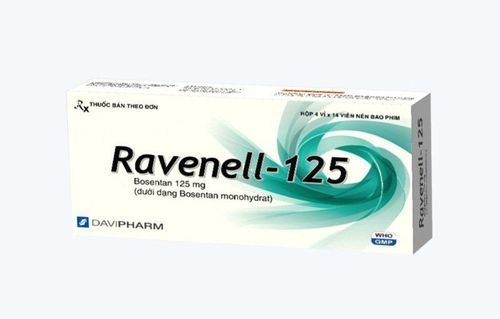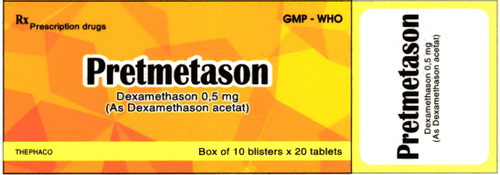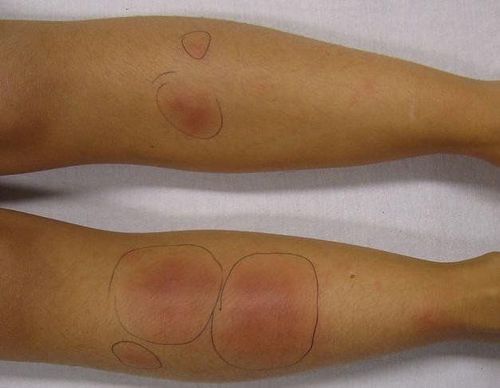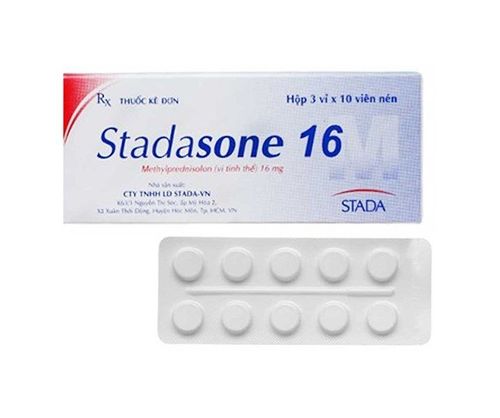This is an automatically translated article.
Scleroderma is an autoimmune disease characterized by the proliferation and deposition of collagenous substances in the skin. The consequences of scleroderma are damage, hardening of the skin and impaired organ function.1. Scleroderma
Scleroderma belongs to a group of autoimmune diseases, scientifically known as Scleroderma, characterized by the proliferation and deposition of collagenous substances in the skin, blood vessel walls and many other organs in the body such as: cardiovascular ducts, digestive, urinary, respiratory.Consequences of this deposition will cause thickening of the skin, damage and impaired function of internal organs. The disease usually begins between the ages of 30 and 50, and is more common in women than in men.
Scleroderma has two common disease forms, localized and systemic:
Localized form: with lesions that usually appear only in the skin, many patches of scleroderma, atrophy, scarring, and scarring may appear. shaped like round or oval patches, small round teardrop shape, long ice shape. The affected area may be white due to hypopigmentation or pink due to capillary dilation or purple in color. The whole body : with the whole skin sclerosis, hardening, mostly in the face, hands, fingers; hard skin makes the patient unable to close the eyes, the mouth is limited in movement, cannot show emotions like a mask; the skin of the hands is fibrous, making the knuckles stiff, limiting movement; fingers were bent and the skin was close to the bone like a dry twig, the fingers ached. This is an important symptom, manifested at the onset of the disease, the fingers are painful intermittently due to local vasomotor disorders, and for a long time, the blood supply is less, causing the fingers to become cyanotic, necrotic, ulcerated and painful. amputated finger. In the digestive system, due to sclerosis, the patient is very difficult to swallow, choking, choking, has constipation or diarrhea, for a long time, the patient is prone to malnutrition, with respiratory organs, the respiratory tract is damaged. fibrosis, so patients have difficulty breathing, cyanosis, respiratory failure and also indirectly affect the heart for a long time. In severe cases, it can cause arrhythmia, pericarditis, myocarditis or endocarditis; In the musculoskeletal system, there can be accumulation of calcium to form hard lime lumps under the skin, causing the patient to have inflammation and pain in the joints.

Xơ cứng bì có hai thể bệnh phổ biến là thể khu trú và toàn thân
2. Cause
Until now, the cause of generalized scleroderma is still unknown, scientists continue to study, but in which it is thought that many disease factors are closely related: immune, endocrine, genetics, environment, including occupation3. Notes in the treatment of generalized scleroderma
Currently, there is no cure for systemic scleroderma. With localized scleroderma, which is milder than systemic, the patient is examined and guided by a dermatologist at home. As for patients with generalized scleroderma, they need to be hospitalized to be monitored and treated actively because this is a serious disease with many manifestations and complicated disease progression, most of the treatment drugs are toxic drugs. high, commonly used drugs such as methotrexate, colchicine, cyclophosphamide and cyclosporin A interferon gamma, clorambucil, 5-fluouracil.The drug is quite effective with skin and lung lesions in scleroderma. However, the toxicity of these drugs, especially cyclosporin A and cyclophosphamide, makes their practical use difficult.
Currently, D-penicillamine, an immunomodulatory drug that inhibits the binding of collagen fibers, is the most widely used drug in the control treatment of scleroderma. In addition to the above medicine, the patient also needs to be treated for the symptoms of the disease such as: softening the skin with rehabilitation physiotherapy, regular exercise to maintain the flexibility of the limbs, fingers and sensitivity. of the skin, massage the skin several times a day, to avoid damage to the skin, causing ulcers; Avoid skin damage by limiting contact with soaps and ointments.
In the case of Raynaud's syndrome, the doctor may prescribe calcium blockers such as: diltiazem, keep warm, wear gloves, wear socks in the cold season, and avoid psychological stress and stress. , do not use drugs such as: amphetamine, ergotamine, beta-blockers, do not smoke.
For patients with esophageal disease who should take the drug in liquid or crushed form, reflux oesophagitis can be reduced or prevented by scar formation by avoiding eating late at night, elevating the head. bed and take antacids such as omeprazole or lansoprazole.

Người bệnh nên đi găng tay ấm vào mùa lạnh
Scleroderma is a collagen disorder that affects the health and working capacity of the patient. The disease needs to be diagnosed early, treated promptly and monitored for a long time, combined with a rest regimen, while waiting for scientists to find an effective solution.
Please dial HOTLINE for more information or register for an appointment HERE. Download MyVinmec app to make appointments faster and to manage your bookings easily.













